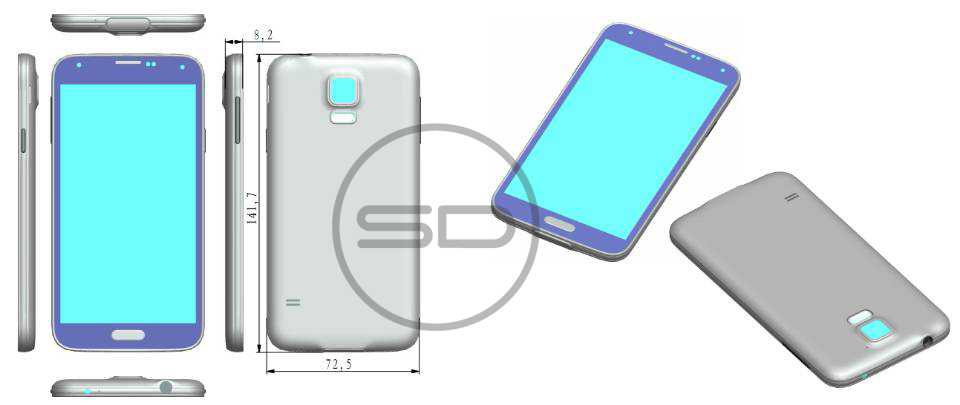 The fingerprint sensor is one of the most anticipated features of the u Galaxy S5. According to the latest information, the sensor should be found in both versions Galaxy S5, so even owners of a cheaper model with a Full HD display and a plastic cover will be able to use it. Samsung is likely to use sensors from Validity Sensors and FPCs, and the sensor will work on a very similar principle to the HTC One Max and iPhone 5s. But unlike iPhoneIn Galaxy The S5 is planned to use the sensor more widely. So let's take a look at what we can expect from the fingerprint sensor.
The fingerprint sensor is one of the most anticipated features of the u Galaxy S5. According to the latest information, the sensor should be found in both versions Galaxy S5, so even owners of a cheaper model with a Full HD display and a plastic cover will be able to use it. Samsung is likely to use sensors from Validity Sensors and FPCs, and the sensor will work on a very similar principle to the HTC One Max and iPhone 5s. But unlike iPhoneIn Galaxy The S5 is planned to use the sensor more widely. So let's take a look at what we can expect from the fingerprint sensor.
The idea is that the sensor will be located directly in the display Galaxy S5 is really interesting. But this does not happen, and even though the prototypes had technology built into the corners of the display, the final product remains more on the ground. Finally, we meet the sensor in the Home Button under the screen. The sensor will work on the same principle as HTC's, so it will be necessary to walk over it. Due to the necessary gesture, a person needs to walk over the button at a reasonable speed so that the sensor can record the fingerprint. Unfortunately, the technology has problems with humidity. If your fingers are wet, Galaxy The S5 will have trouble registering your finger. However, the sensor can recognize it and a message will appear on the display if you were to wipe your fingers.
In total, it will be possible to record 8 different fingerprints, each of which can be assigned to a specific task or application. At least one finger must be used to unlock the device, which means you can create 7 quick shortcuts to open your favorite websites, favorite apps, or even to turn WiFi off and on. The interface for the sensor is closely connected with the entire operating system that runs on the phone. Samsung also suspects that some users would like to keep some things private and that's why the new Galaxy The S5 will offer the Personal Folder and Private Mode functions, which will only appear when a specific finger is applied. Applications and files that the user considers private can be hidden in these folders. It will be possible to open these folders in a way other than scanning your finger. According to available information, it will be possible to secure these folders in other ways, for example with a gesture, password or PIN code. The fingerprint can also be used for quick login on websites.

*Source: SamMobile